Source: umagazine
The research and development (R&D) teams from the University of Macau (UM) have achieved fruitful outcomes after years of hard work and dedication – they have not only created entrepreneurial opportunities for talented young researchers over the years, but have also developed remarkable products with high potential to take the lead in their respective fields.
Global Leading, Self-developed Chemical Screen
Zebrafish is an ideal large-scale chemical screening model with a unique biological and physiological characteristics that make high-throughput screening feasible. There are now an estimated 3,000 universities, research institutes and companies from over 100 countries running genetic, physiological, environmental or medical testing on Zebrafish. However, most researchers might have felt some inconvenience from the most widely purchased chemical screen using live zebrafish, and its technical limitations hinder productivity. In view of this situation, a UM team has developed a system that will solve the most common and frustrating technical barriers of screening in zebrafish.
According to Prof Li Cheuk Wing, an assistant professor of the Institute of Chinese Medical Sciences (ICMS) who serves as one of the project investigators, high-tech components such as the high-throughput microfluidic chip and the integrated microfluidic chip were developed by UM laboratories. The former chip can replace the industry standard 96-well plates and allows researchers to control how fish are positioned. The latter chip functions like a camera, automatically producing clear images of the organs for further studies. ‘The screen has broken many limitations, especially in terms of operations. It has largely increased our efficiency for the most economical results that no other products of this kind could be compared with,’ says Prof Li.
Potential Investors Have Arrived
Prof Lee Ming Yuen, the other project investigator, who is also an ICMS professor, notes that there is a significant demand for such a product. He adds that many government units, business companies, research institutions, and pharmaceutical companies have been using live zebrafish for various purposes, for instance, to screen out environmental pollutants, gutter oil (for food safety), and toxins in cosmetic products, or to collect data for healthcare research studies. ‘There has been a great demand for our device. So far we only consider one foreign product as our competitor in the international market. This product could only automatically process one zebrafish at one time,’ says Prof Lee. ‘Meanwhile, our screen is fully automatic and is able to work with over 200 fish at the same time. The throughput of chemical screening and imaging capacities of our product are over 100 times better than that of the foreign brand.’ Prof Lee looks forward to promoting this technology on the international market.
In 2017, the screen made its debut at a roadshow contest of the Cross Straits, Hong Kong and Macao Collaborative Innovation Forum in Macao. It was recognised by the competition jury for its innovative design and quality. ‘One of the judges was very interested in our project and even remarked that the product is worth investing in. The reason why we started this project is quite simple – for our own use in the laboratory. It is very encouraging when many experts and scholars from different countries and regions say they want one after visiting our lab.’ The process of quality control is currently ongoing and Prof Lee expects the quality and safety accreditation to be completed by the end of this year. At that time, the new product will be ready for launch.
Aiming for Lusophone Markets
Bioactive PD-001 Molecule – another UM-developed product which is likely to serve as an antidote for Parkinson’s Disease (PD), has received a lot of industry attention. In 2014, in the presence of Portuguese President Aníbal António Cavaco Silva, UM signed a statement of work with the Portuguese company TechnoPhage to strengthen the collaboration between Macao and Portugal in Chinese medical sciences. The agreement between UM and Technophage signalled an official start of the collaboration, including the technology transfer of the PD-001 project. As the project principle investigator, Prof Lee has high hopes for his product to enter the food and nutrition supplement market in Europe.
So far, the team has been granted a number of patents for the PD-001 Molecule by authorities in the United States and mainland China. As a biotechnology company based in Portugal, TechnoPhage showed an interest in collaboration in the early stage of the project, Prof Lee notes. Now, the molecule is almost ready to be manufactured into a dietary supplement. ‘This project targets the European and Portuguese-speaking markets. TechnoPhage is more familiar with the European regulations on novel food and it is easier for them to bring our product there and apply for registration. There will be a huge market in European countries and in Brazil. The cooperation has been smooth and that is partly due to Macao’s role as a service platform between China and Portuguese-speaking countries,’ says Prof Lee.
New Hope for Parkinson’s Disease
Second to Alzheimer’s disease in terms of prevalence, Parkinson’s disease (PD) is a long-term degenerative disorder of the central nervous system that mainly affects the motor system. Currently, about 7 million people around the globe suffer of PD and over 2 million of them are Chinese. The motor symptoms of the disease are a result from the death of cells in the substantia nigra, a region of the midbrain. Generally coming on slowly over time, the symptoms include shaking, rigidity, slowness of movement, and difficulty with walking. However, there is no preventive or long-term effective treatment or health products available. It has taken Prof Lee’s team nine years to isolate the bioactive ingredient of PD-001 from Alpinia oxyphylla that could prevent and ameliorate the development of the disease. This finding is a joint effort of many cohorts of students and faculty members involved in the project.
According to Prof Lee, the cause of Parkinson’s disease generally remains unknown and the key pathological change in the body is dopaminergic neuronal loss in the substantia nigra, resulting in insufficient dopamine generated for the motor system. He observes that current clinical treatments only relieve the symptoms of the disease. The team successfully extracts and isolates PD-001 – a small molecule with a novel structure from the fruit of Alpinia oxyphylla. From laboratory studies designed to determine the preventive and therapeutic effects of PD-001 on different animal models of PD, the team found that treatment with PD-001 can significantly reduce cellular damage in the dopaminergic neurons and can improve dyskinesia. ‘If things go smoothly, this project will be the first case of developing pure compound from traditional Chinese medicine as an international novel food ingredient. As to drug development, clinical trials will take longer time,’ says Prof Lee.
Diagnostic Tool for Promoting Global Health
The Ebola outbreak in West Africa claimed over 10,000 lives from 2013 to 2016. Probably, things would have been different if there had been an economical, fast and accurate virus detection tool available at the time. An in-vitro diagnostic (IVD) tool, an innovative medical product developed by another UM team can perform a rapid diagnostic test for infectious diseases by taking only a small specimen from the human body, such as blood, urine, sputum, or tissue.
As the project investigator and the associate director (research) of UM’s State Key Laboratory of Analog and Mixed-Signal VLSI, Prof Mak Pui In points out that the turnaround time for test results strongly affects the transmission speed of infectious diseases. ‘This tool is low cost and low risk and is designed to rapidly identify symptoms and diseases occurring in individuals. It provides opportunities for people from all walks of life and ethnic groups to run rapid diagnostic tests, and that will help improve global health overall,’ says Prof Mak.
Prof Mak notes that with the continuous development of IVD technology, there will be a high demand for IVD medical products and services in the future. He adds that IVD tools will be indispensable for disease and health management. According to Forbes magazine, there has been huge growth in the IVD global market, reaching 70 billion US dollars in 2017. ‘At this point, the DaAn Gene Co., Ltd. of Sun Yat-sen University, a high-tech company whose expertise is molecular diagnostic technique, wants to work with us in this project. We will soon get down to the practical details of the collaboration. It is expected to launch the first-generation products either this year or next,’ says Prof Mak.
Cross-disciplinary Collaboration Yields Better Results
When an R&D project is achieving technological maturity and ready to launch its products to market, the team will work with the university to reach technology transfer or authorisation agreements with domestic and/or foreign corporations for mass production. Prof Mak believes that in order to expand university services to accommodate the growing needs for technology transfer in the future, UM will inevitably collaborate with professionals and organisations from the Guangdong-Hong Kong-and Macao Bay Area. Meanwhile, he foresees there will be many challenges ahead, such as legal provisions and viable business plans in different countries or regions, and the university will continue to provide professional assistance in this regard.
Meanwhile, Prof Lee sees the need to foster a cross-disciplinary incubation environment that involves different experts and professionals nurtured by UM. ‘We have enjoyed a productive research environment here in the university and there are plenty of opportunities out there to cooperate with entrepreneurs. What we need now is a platform that attracts professionals from various disciplines to jointly promote technology transfer. As a researcher, we are to innovate and create cutting-edge technologies. Then, we welcome legal and business professionals to jump in, like handling legal matters and business proposals, seeking investment and financing opportunities. By doing so, we will find our path to succeed in the innovation and entrepreneurship industry in the future,’ he says.
Transforming the Fruits of Scientific Research: UM Promotes Innovation and Entrepreneurship
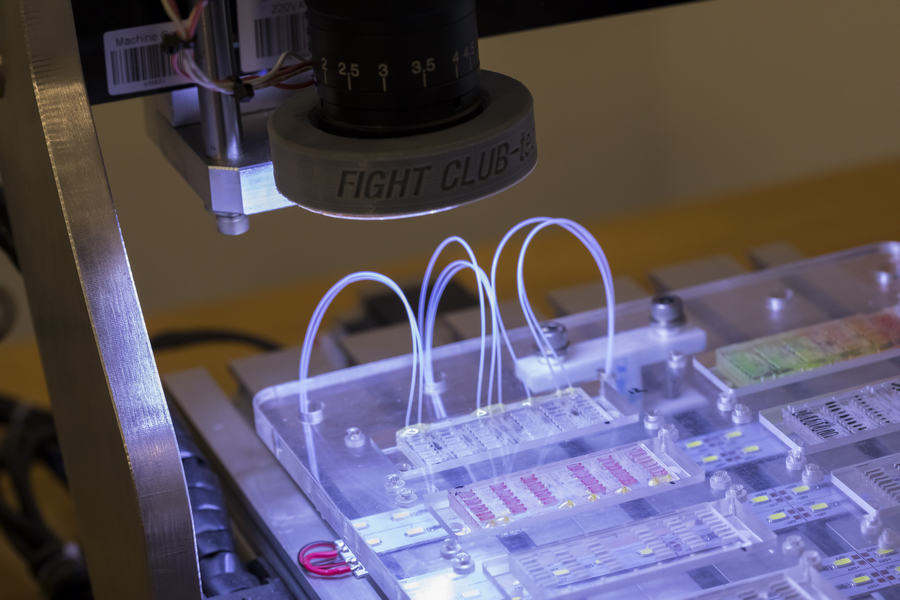
45160-78221
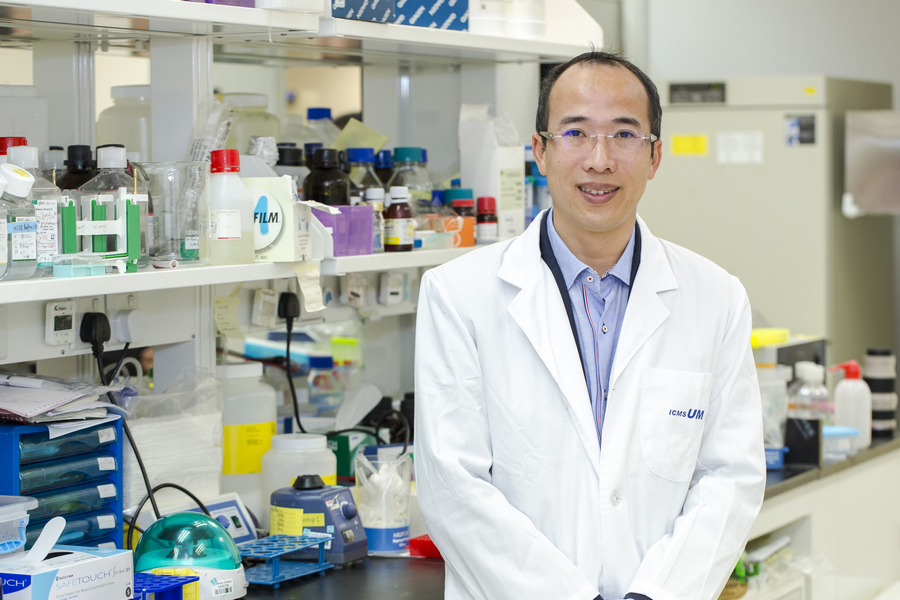
Prof Lee Ming Yuen
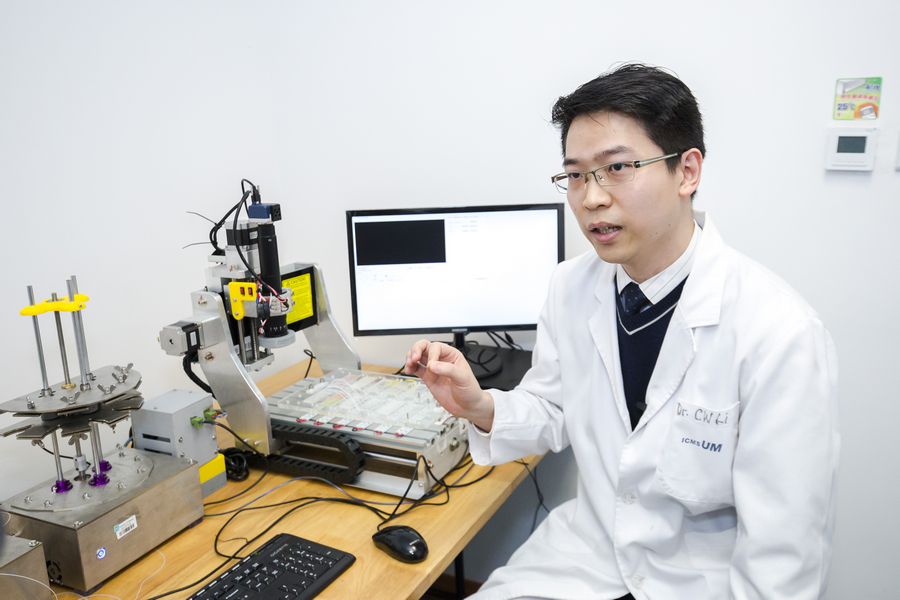
Prof Li Cheuk Wing
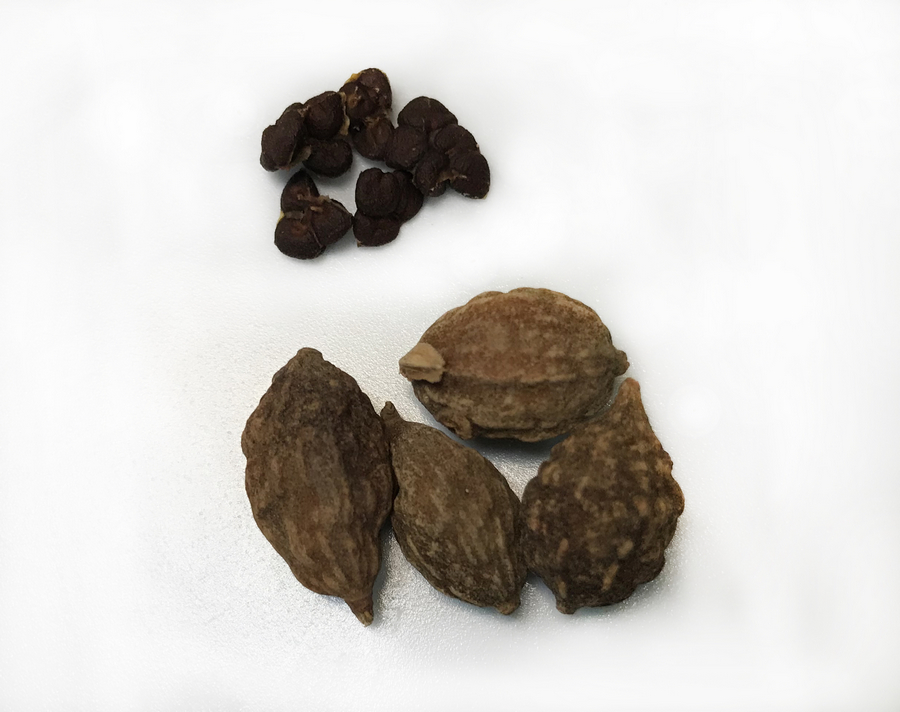
PD-001
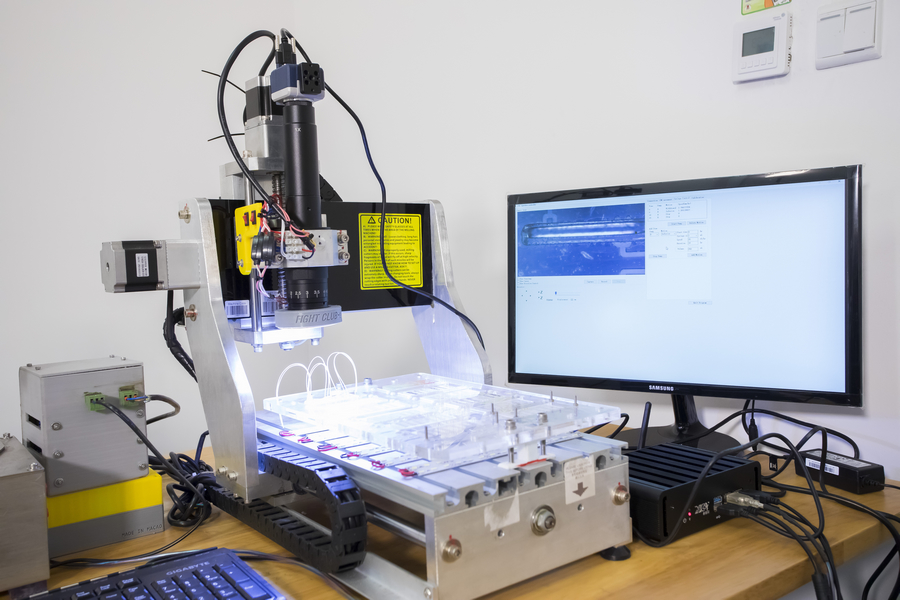
a bioactive ingredient extracted from Alpinia oxyphylla

The Integrated High-throughput Microfluidic Chip Zebrafish Imaging System developed by UM researchers
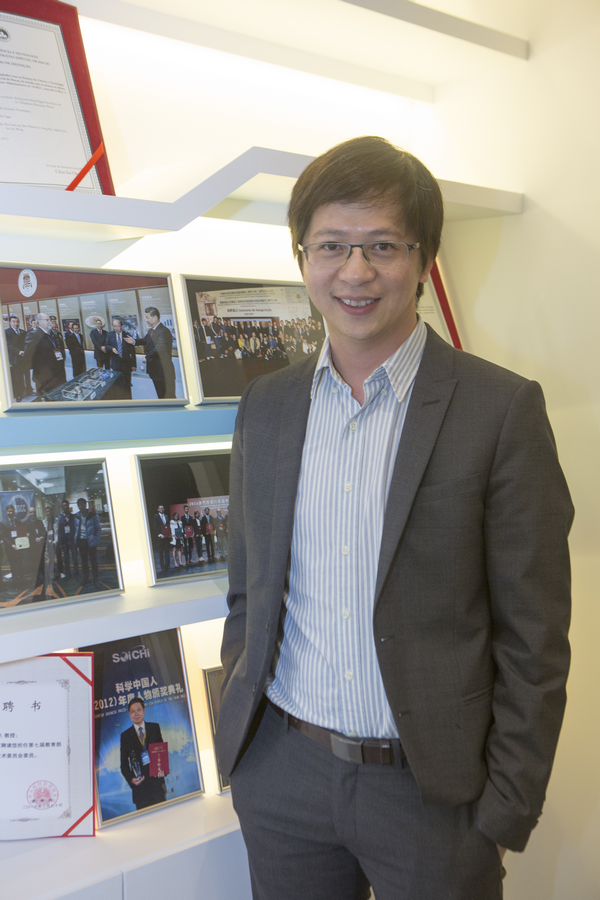
The bioactive ingrdient of PD-001 from Alpinia oxphylla can significantly reduce cellular damage in the dopaminergic neurons from animal models of PD
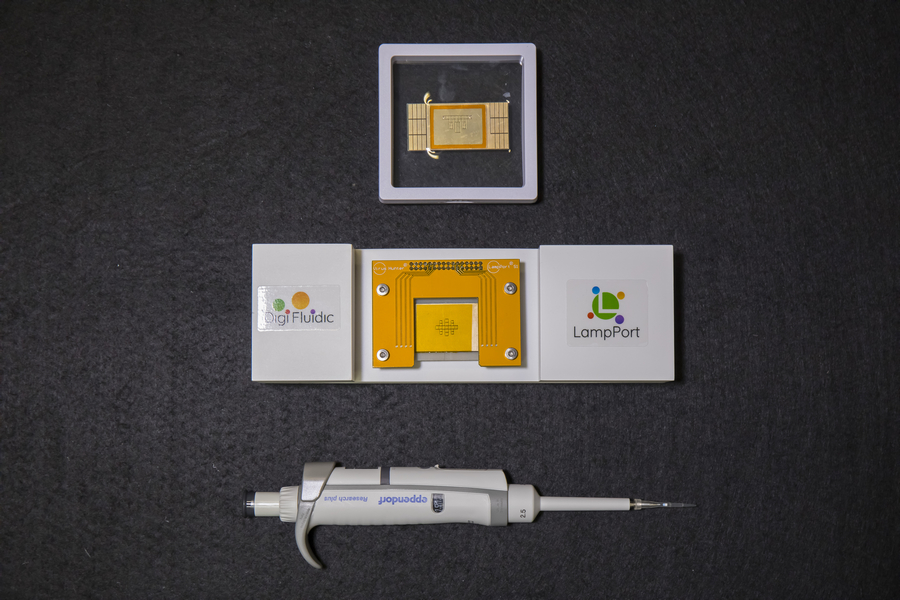
Prof Mak Pui In
